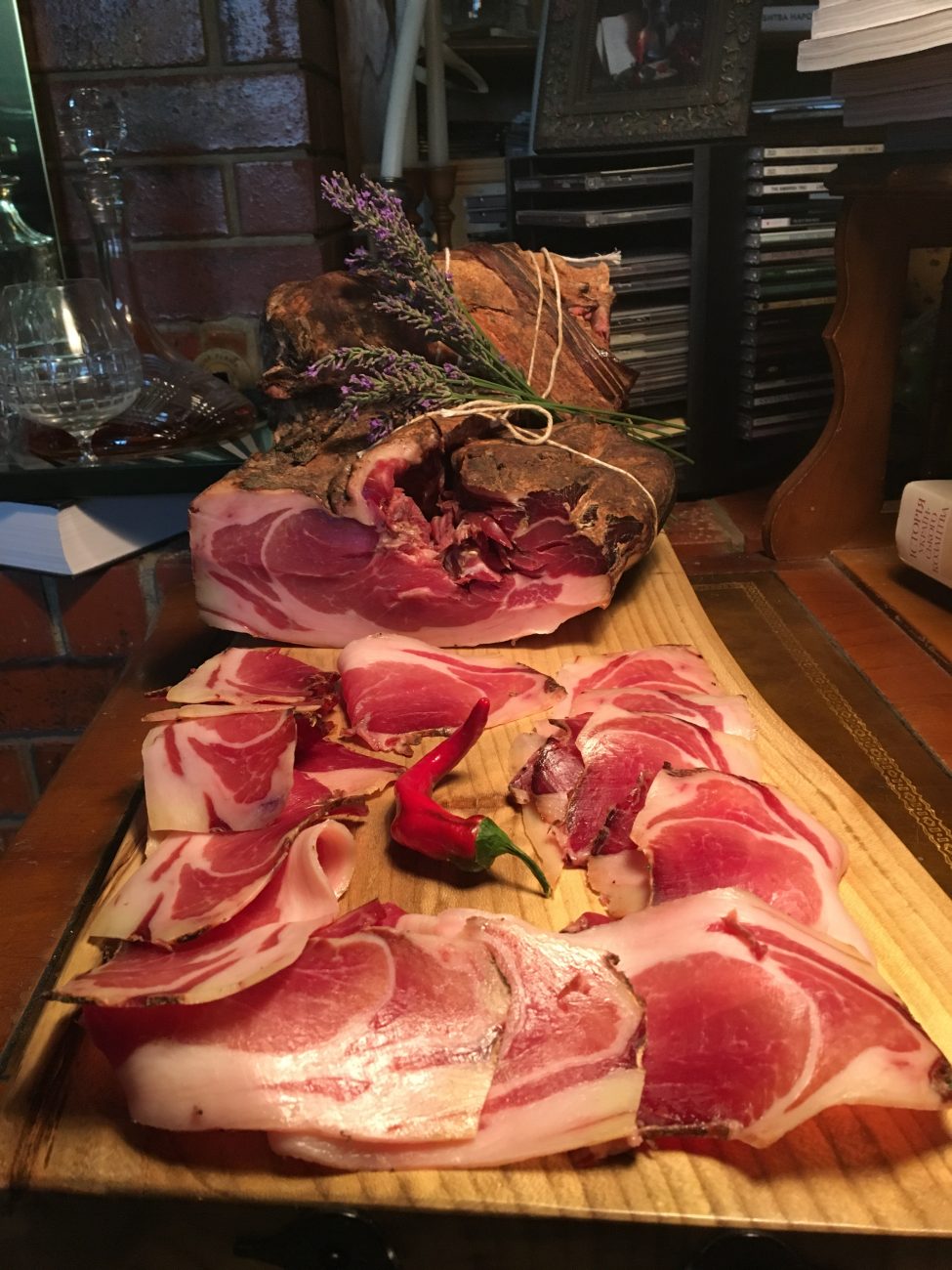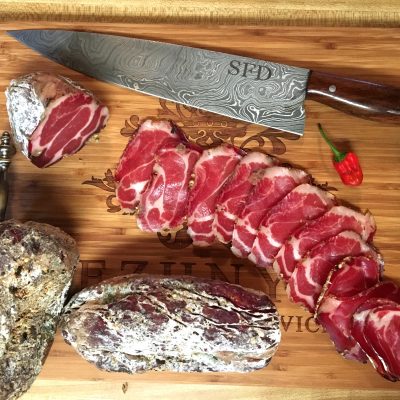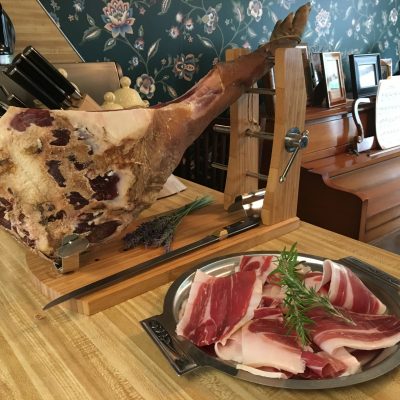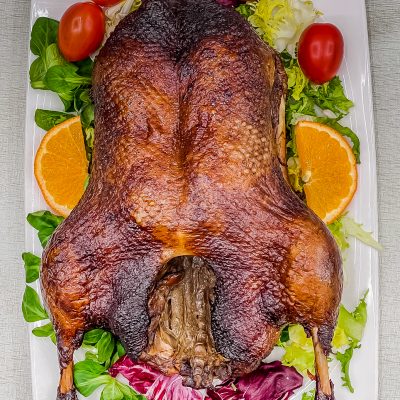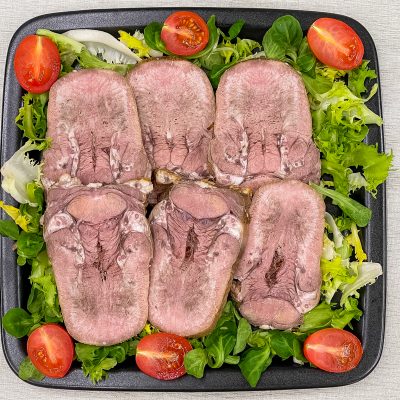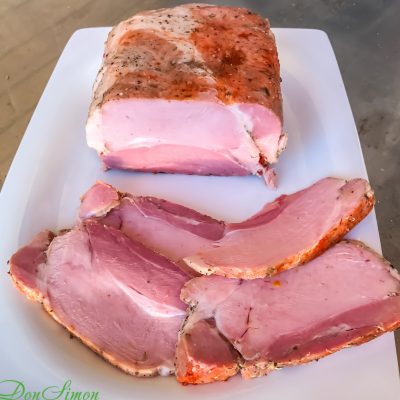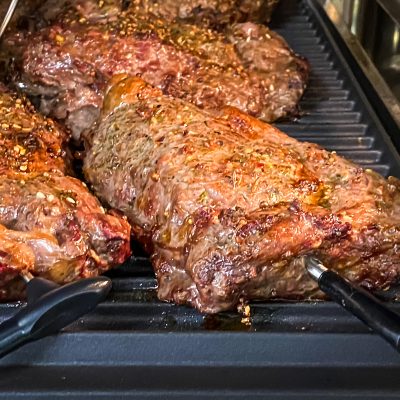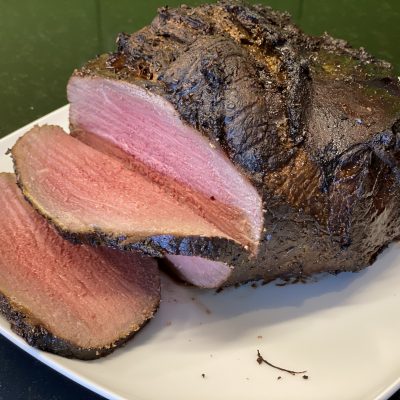Directions
John Stuart Mill argued that dominance of a social consensus is the most profound kind of tyranny. Consequently, liberty is achieved when such power is diminished enough to allow people undertake “experiments in living.” The tools of enforcement of the social consensus might change, but their general form stays unaffected since the times we were trying to domesticate cows. Instead of ostracizing someone by placing him or her outside of the clan for a period of time, we now shame “the deviant” through FB.
Various online forums that provide opportunities for salumieri to share their experience often contain a litany of criticism of the substandard quality of the commercial pork in the USA. That criticism is, of course, valid. Yet, it’s also common to read statements that refer to the pork, found in most supermarkets as “garbage,” not suited for dry-curing. Although I’ll be the first one to preach on the limitations of the application of the commercially raised pork in charcuterie, I maintain that one can create a decent product from some such cuts. It’s easy to produce a masterpiece from free-range, fed on nuts and acorns mangalitsa; try to do it from that Smithfield pork…
As a part of my “experiment in living”, I try and test various cuts from commercial pork in dry-curing. Around four years ago, I hit a jackpot with humble “pork shoulder picnic roast” that typically sold for just 97c per lb at the Reasor’s around the corner from my house. I treat it along the lines of speck: don’t remove the skin, cold-smoke, and age at the minimum for six months. Unlike the speck, I typically do not remove the bones until the curing is done. The results are outstanding. So, if you don’t have access or can’t afford to buy a pig that costs more than a decent used vehicle, don’t despair. Purists and charcuterie snobs notwithstanding, there is a way to create – as they used to say in the Soviet army– “a candy out of s-t.” The last term, of course, being a gross overstatement.
On that premise,
Recipe:
The journey began on October 1st, 2016 and ended on June 16th, 2017. Weight loss: 47%.
Shoulder #1: Sea salt: 2.55%; Cure#2: 0.25%; Korean Chili Flakes: 0.5%; Garlic powder: 0.1%; Turbinado sugar: 0.3%; chianti: as desired.
Shoulder #2: Sea salt: 2.55%; Cure#2: 0.25%; Korean Chili Flakes: 0.7%; Black Pepper: 0.1% Turbinado sugar: 0.3%; chianti: as desired.
Both shoulders went into the vacuum and were placed in the fridge with periodic “massages” and turns until October 30th. Then – washed, dried, dusted with the same combination of spices, cold-smoked for three days over pecan with rest and placed to the Curing Chamber.
The taste does not resemble speck, but rather of a good Parma prosciutto on its fatty side. At least, the stuff they sell in the USA as Parma prosciutto. If you don’t believe me, follow the recipe and send your thanks six months from now…
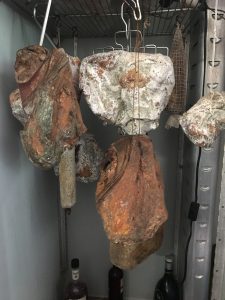
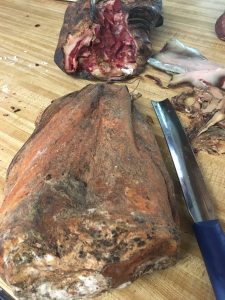

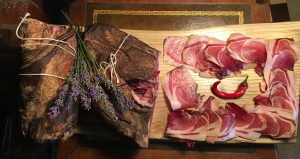
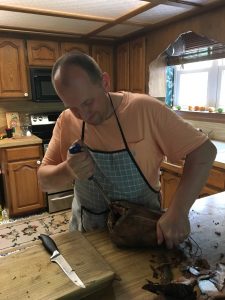


 Русский
Русский